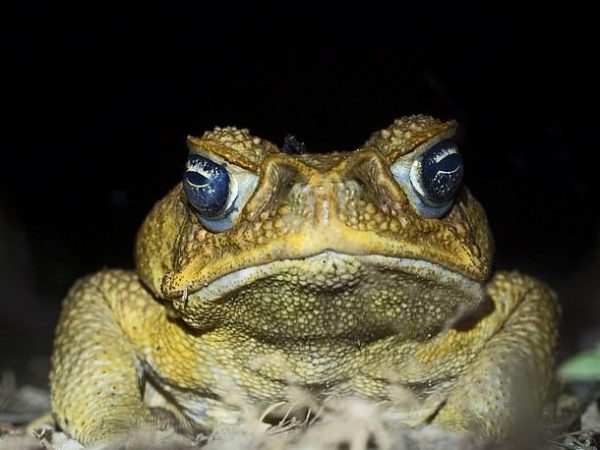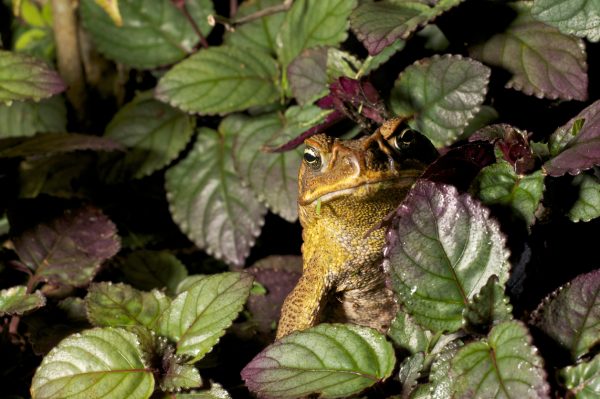‘Monster’ Cane Toads That Kill Dogs With Toxic Glands Surface in Florida
In 1935 around three thousand cane toads were released in order to control the cane beetles that were destroying the sugarcane in North Queensland, Australia.
Unfortunately, the beetles were still chewing the canes and the toads were multiplying faster than one could keep count. The three thousand have now turned into millions that inhabit thousands of square miles. Not only are they a nuisance, they are poisonous to other animals.
The grumpy looking amphibians are native to Central America, the southern United States and the warmer regions of northern South America.

According to nationalgeographic.com, the cane toad (Rhinella marina) is about four to six inches long and weighs just over two pounds. They can be different shades of brown, tan and even grey. They live from five to ten years in the wild and have very large families with the females laying thousands of eggs.
There are no predators in Australia to keep them under control and they are overwhelming the population of native toads. The toads will eat just about everything including other predators, snakes, birds, small mammals, other frogs and toads, food scraps and dog food.
They have parotid glands on their backs near the shoulders and when frightened they secrete a milky liquid called bufotoxin that can cause convulsions, loss of coordination and cardiac arrest often leading to the death of a dog or cat.
Humans can suffer painful skin irritation and burning sensations in their eyes. Eating the toad or its eggs can kill as the poisons affect the heart and central nervous system.
In 1955 a pet dealer was bringing some toads into Florida and about one hundred of them escaped, according to smithsonianmag.com.
The 2019 mild winter and 2020 wet spring in Palm Beach, Florida has allowed thousands of juvenile toads to hatch from ditches, canals, ponds and rivers covering the ground and streets enough that residents are afraid to go out to their yards and swimming pools especially if they have pets.

Mark Holladay who is a technician with the Palm Beach extermination service, Toad Busters, remarked, “There will be another influx like this in twenty two days when the next batch hatches out, and this is in every community in Florida.”
According to myfwc.com, the Florida Fish and Wildlife Conservation Commission is giving out instructions and posting videos of how the public can humanely capture and euthanize the invasive toads.
Capture and release in another area is not allowed and if the homeowner is unable to remove the toads, they can enlist the services of wildlife trappers such as Toad Busters.
The advised way to euthanize is to apply twenty percent benzocaine toothache gel or sunburn spray on the toad’s lower belly and wait a few minutes for the toad to lose consciousness. Once that has happened it is advised that the toad should be placed in a sealed plastic bag and put in the freezer for about two days.

The American Veterinary Medical Association does not endorse this method saying, “Hypothermia is considered an unacceptable method of euthanasia for amphibians and reptiles because it does not result in immediate and irreversible death.” Their acceptable methods include inhaled anesthetics, injections and immersion.
To discourage the toads from entering a yard, residents are advised to keep their grass short, use yellow bug lights, clear away any brush piles and fill up any holes where the toads can hide.
A Mining Company in Australia Blew Up Aboriginal Caves Full of 46,000 Years of History
Keep shrub and evergreen tree branches off the ground and remove any type of clutter. If the toad is a pet and the owners wish to surrender it, the Florida Fish and Wildlife Conservation Commission has a program called the Exotic Pet Amnesty Program to keep owners of any exotic pet from releasing it into the wild unless it was captured in the wild and is not a native species.





